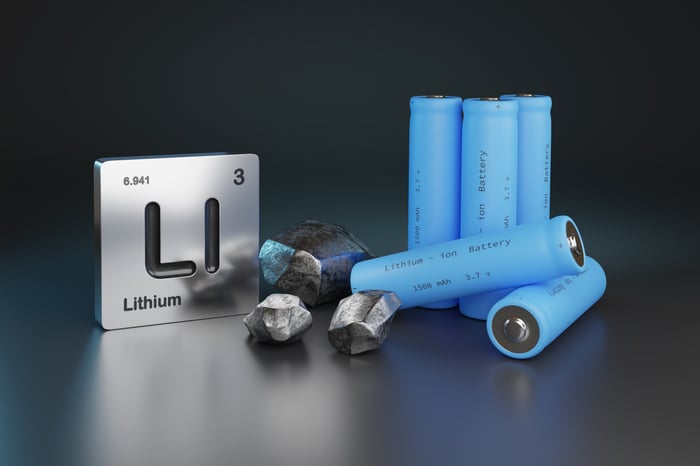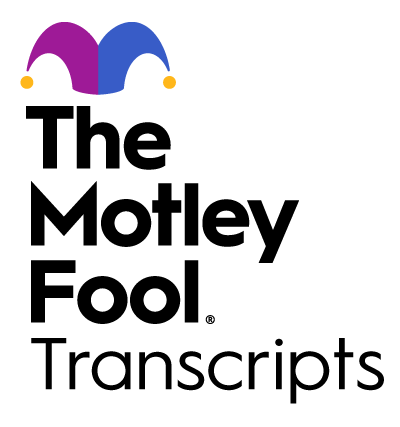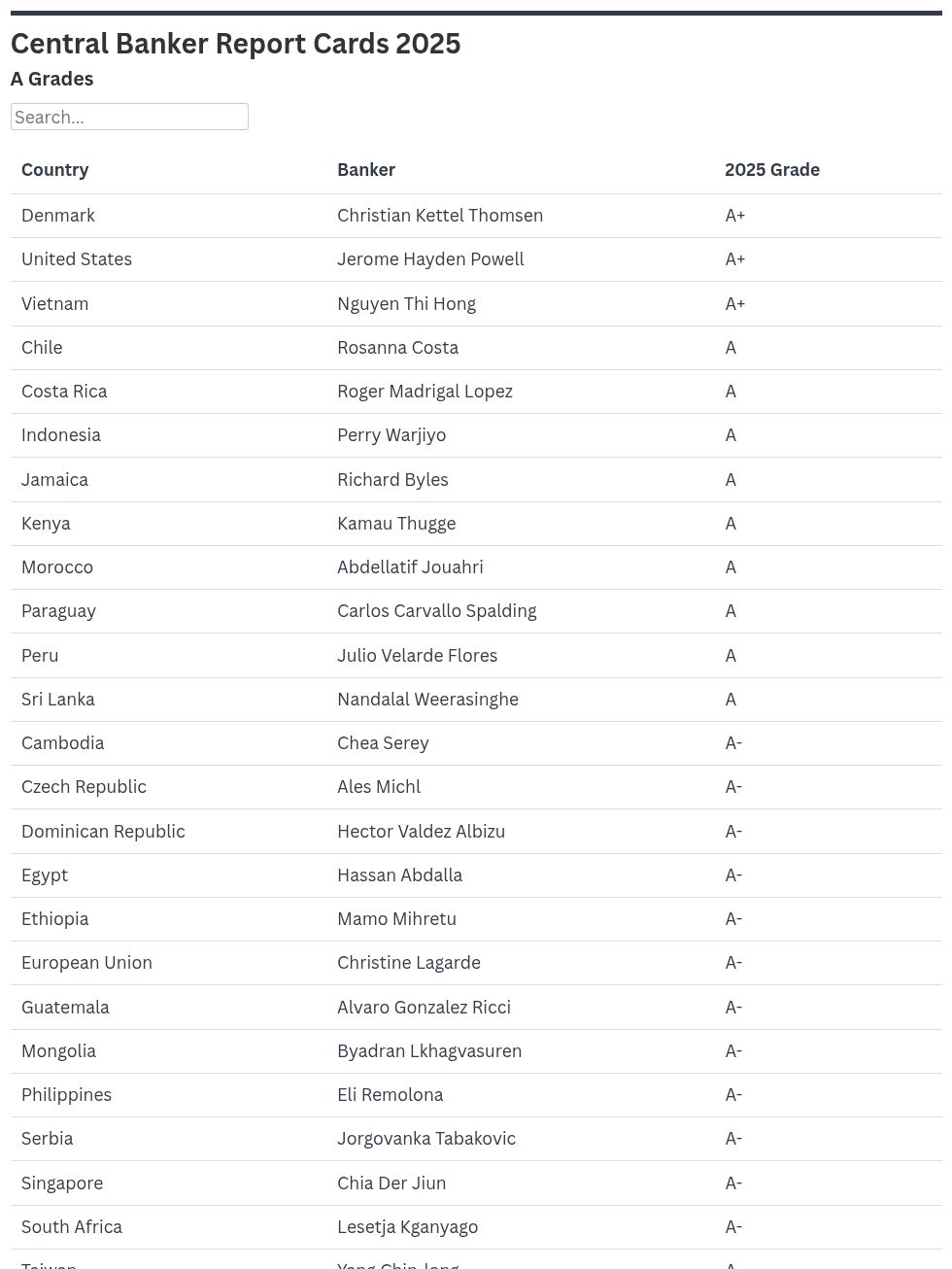
Image source: The Motley Fool.
Date
Thursday, Oct. 16, 2025 at 9:00 a.m. ET
Call participants
Chairman and Chief Executive Officer — Alan Schnitzer
Chief Financial Officer — Dan Frey
President, Business Insurance — Greg Toczydlowski
President, Bond & Specialty Insurance — Jeffrey Klenk
President, Personal Insurance — Michael Klein
Senior Vice President, Investor Relations — Abbe Goldstein
Need a quote from a Motley Fool analyst? Email [email protected]
Takeaways
Core Income — $1.9 billion in core income, or $8.14 per diluted share, driven by underwriting gains and increased investment income.
Return on Equity — Core return on equity was 22.6% for the quarter; trailing twelve-month core return on equity at 18.7%.
Underwriting Income — $1.4 billion pretax, doubling compared to the prior-year quarter, aided by reduced catastrophe losses and a 1.7-point improvement in the underlying combined ratio to 83.9%.
Net Investment Income (After Tax) — $850 million, a 15% year-over-year increase, driven by fixed income portfolio growth and higher yields.
Net Written Premiums — $11.5 billion in net written premiums, with Business Insurance at $5.7 billion (up 3%), Bond & Specialty at $1.1 billion, and Personal Insurance at $4.7 billion.
Segment Combined Ratios — Business Insurance: 92.9% (88.3% underlying); Bond & Specialty: 81.6% (85.8% underlying); Personal Insurance: 81.3% (77.7% underlying).
Shareholder Capital Return — $878 million returned, with $628 million in share repurchases and $250 million in dividends.
Adjusted Book Value Per Share — Adjusted book value per share was $150.55 at quarter end, up 15% from a year earlier.
Expense Ratio — 28.6% (year-to-date 28.5%), with management maintaining a 28% target for both 2025 and 2026.
Catastrophe Losses — $42 million pretax, described as “benign,” driven largely by tornado and hail events in the Central U.S.
Net Favorable Prior Year Reserve Development (PYD) — $22 million pretax (includes $277 million asbestos charge in Business Insurance, offset by favorable PYD in other lines).
Operating Cash Flow — Record $4.2 billion, with holding company liquidity of $2.8 billion at quarter end.
Share Repurchase Outlook — Management expects Q4 repurchases to reach about $1.3 billion, with a total of approximately $3.5 billion projected over Q3 2025 through Q1 2026, equating to a 5% reduction in share count.
Business Insurance Pricing Metrics — Renewal premium change (RPC) of 7.1% segment-wide, increasing to 9% ex-property; renewal rate change of 6.7%; retention at 85%.
Bond & Specialty Insurance — Segment retention of 87% in management liability, renewal premium change of 3.7% in domestic management liability, and a 40% increase in new lines of business sold to existing customers (private and nonprofit).
Personal Insurance Homeowners Metrics — Renewal premium change at 18%, expected to decrease to single digits in early 2026 as insured values align with replacement costs; retention at 84%.
Personal Insurance Auto Metrics — Combined ratio of 84.9%, underlying combined ratio of 88.3%, auto new business premium up year-over-year for the fourth consecutive quarter; retention at 82%.
Investment Portfolio Update — Portfolio grew by approximately $4 billion; more than 90% in fixed income with an average credit rating of AA; net unrealized investment loss narrowed from $3 billion to $2 billion after tax.
Debt Issuance — $1.25 billion issued (split between $500 million ten-year and $750 million thirty-year notes) for ordinary capital management.
Technology Investment — $13 billion invested since 2016 in technology, enabling a 300-basis-point reduction in expense ratio and access to over 65 billion clean data points to power AI and analytics initiatives, as disclosed by management.
Summary
Travelers (TRV -3.30%) reported substantial earnings growth, citing record profitability driven by improved underwriting and investment performance. Management highlighted excess capital and liquidity, with plans to accelerate share repurchases through Q1 2026 and indicated additional buybacks linked to the Canadian operations sale, specifically referencing a three-quarter period. The call outlined targeted underwriting strategies, with disciplined risk selection in property and actions to optimize exposure in high-catastrophe geographies. The company emphasized advancements in technology and AI, quantifying its scale, data advantage, and focus on sustainable cost improvements and operating leverage. Leadership reaffirmed a measured approach to capital deployment, prioritizing technology and potential M&A before returning excess to shareholders.
Chairman Schnitzer said, “we anticipate a higher level of share repurchase over the next couple of quarters,” underscoring shareholder return as a key use of surplus capital.
CFO Frey stated, “Our outlook for fixed income NII, including earnings from short-term securities, has increased from the outlook we provided a quarter ago,” signaling rising yield expectations for the investment portfolio.
President Klein provided forward guidance: We expect RPC to remain elevated and then drop into single digits beginning in early 2026.
President Toczydlowski disclosed middle market new business of $391 million—its highest third-quarter result—up 7% from the prior year, despite selective property underwriting and competitive market dynamics.
Industry glossary
Renewal Premium Change (RPC): The percentage change in premium for renewed policies, reflecting both pricing actions and changes in exposure or insured value.
Combined Ratio: A measure of underwriting profitability, calculated by summing incurred losses and expenses as a percentage of earned premiums; a ratio below 100% indicates underwriting profit.
PYC/PYD (Prior Year Reserve Development): The adjustment (favorable or unfavorable) to reserves set aside in prior periods for claims, as new information becomes available.
Retention: The proportion of policies or premium renewed with the company, stated as a percentage.
Middle Market: The business segment serving mid-sized commercial insurance customers, distinct from small businesses (“Select”) and large national accounts.
Travis: Travelers’ proprietary digital experience platform for distribution partners.
Full Conference Call Transcript
Alan Schnitzer chairman and CEO Dan Frey CFO and our three segment presidents. Greg Toczydlowski of Business Insurance, Jeff Klenk of Bond and Specialty Insurance, and Michael Klein of Personal Insurance. They will discuss the financial results of our business and the current market environment. They will refer to the webcast presentation as they go through prepared remarks, and then we will take questions before I turn the call over to Alan, I’d like to draw your attention to the explanatory note included at the end of the webcast presentation. Our presentation today includes forward looking statements. The company cautions investors that any forward looking statement involves risks and uncertainties and is not a guarantee of future performance.
Actual results may differ materially from those expressed or implied in the forward-looking statements due to a variety of factors. These factors are described under forward-looking statements in our earnings press release and in our most recent 10-Q and 10-Ks filed with the SEC. We do not undertake any obligation to update forward-looking statements. Also, in our remarks or responses to questions, we may mention some non-GAAP financial measures. Reconciliations are included in our recent earnings press release, financial supplement, and other materials available in the Investors section on our website. And now I’d like to turn the call over to Alan Schnitzer.
Alan Schnitzer: Thank you, Abby. Good morning, everyone, and thank you for joining us today. We are pleased to report excellent third-quarter results. We earned core income of $1.9 billion or $8.14 per diluted share. Our return on equity for the quarter was 22.6%, bringing our core return on equity for the trailing twelve months to 18.7%. Very strong underwriting results and higher investment income drove the bottom line. Underwriting income of $1.4 billion pretax more than doubled compared to the prior year quarter, benefiting from both the lower level of catastrophe losses and higher underlying underwriting income. The underlying result was driven by higher net earned premiums and an underlying combined ratio that improved 1.7 points to an exceptional 83.9%.
Underwriting income was higher in all three segments. Our high-quality investment portfolio also continued to perform well, generating after-tax net investment income of $850 million for the quarter, up 15%, driven by strong and reliable returns from our growing fixed income portfolio. Our underwriting and investment results, together with our strong balance sheet, enabled us to return almost $900 million of capital to shareholders during the quarter, including $628 million of share repurchases. At the same time, we continue to make strategic investments in our business. Even after this deployment of capital, adjusted book value per share was up 15% compared to a year ago.
With strong results over the past year and a particularly light cat quarter, we have a higher than usual level of excess capital and liquidity. Consequently, we anticipate a higher level of share repurchase over the next couple of quarters. Dan will have more to say about that in a minute. Turning to the top line, we grew net written premiums to $11.5 billion in the quarter. In business insurance, we grew net written premiums by 3% to $5.7 billion, led by 4% growth in our domestic business. Excluding the property line, we grew domestic net written premiums in the segment by more than 6%. The declining premium volume in property continues to be a large account dynamic.
In fact, we grew property in both middle market and small commercial. We’ve seen this dynamic in the large property market before, and we won’t compromise our underwriting discipline. Over time, particularly as catastrophic events inevitably unfold, the value of that discipline and the cost to those who abandon it will become unmistakable. Renewal premium and change in business insurance was 7.1%, driven by continued historically high RPC in our middle market and select business businesses. Excluding the property line, renewal premium change in the segment was a very strong 9%, and renewal rate change was a very strong 6.7%. Greg will share additional detail by line. Retention in the segment was 85%.
Given the high quality of the book, we were very pleased with that result. In Bond and Specialty Insurance, we grew net written premiums to $1.1 billion with higher renewal premium change and continued strong retention of 87% in our high-quality management liability business. Net written premiums in our market-leading surety business remained strong. In personal insurance, written premiums were $4.7 billion with strong renewal premium change in our homeowners business. You’ll hear more shortly from Greg, Jeff, and Michael about our segment results. As we head toward the end of the year, our planning for 2026 is well underway. As always, that process involves assessing the environment ahead.
There are uncertainties out there: economic, political, geopolitical, not to mention the loss environment. We are very confident that we’re built and very well positioned for whatever lies ahead. We’re operating from a position of considerable strength. Profitability is strong, reflecting our leading underwriting expertise and the operating leverage we’ve built through a sustained focus on productivity and efficiency. Our competitive advantages have never been stronger or more relevant. Strong underwriting is the flywheel that sets everything in motion. Our premium growth at attractive margins has generated strong cash flow, which enables us to make strategic investments in our business, return excess capital to shareholders, and grow our investment portfolio.
Since 2016, we have successfully invested $13 billion in technology, returned more than $20 billion of excess capital to our shareholders, and grown our investment portfolio by nearly 50% to more than $100 billion. Scale matters, increasingly so. We have the scale to win in an environment where technology and AI will continue to segment the marketplace. We have a track record of identifying the right strategic priorities and driving value from them. You can see that in the 300 basis point reduction we’ve achieved in our expense ratio since 2016, even while we were significantly increasing our overall technology spend.
Importantly, our size gives us the data to power AI, creating a virtuous cycle: better insights, better decisions, better outcomes, more resources to invest. For example, our long-time focus on organizing and curating data has given us access to more than 65 billion clean data points from decades of history across multiple business lines. We leverage that to sharpen our underwriting and shape our claim strategies. With the vast majority of our business in North America, we hold a leading position in the largest and most stable insurance market in the world, an advantage that insulates us from much of the risk arising from the economic instability and geopolitical uncertainty around the globe.
Our fortress balance sheet and exceptional cash flow provide us with the financial strength to invest consistently in the business regardless of the external conditions. Our financial strength also enables us to manage comfortably through large loss events like the January California wildfires. When it comes to the loss environment, from weather volatility to the impact of social inflation on casualty lines, no one is better positioned. Diversification provides powerful protection. In fact, our business mix produces a consolidated loss ratio that’s actually less volatile than the loss ratio of our least volatile segment. That’s the power of a balanced and diversified portfolio. Equally important is our demonstrated ability to confront the loss environment head-on.
We have the data, the analytics, and the discipline to establish reserves and loss picks appropriately and generally ahead of the market. That matters because until you have an accurate view of the loss environment, your risk selection, underwriting, and claim strategies are all operating with the wrong inputs. Since our early identification of the acceleration of social inflation in 2019, we’ve grown the business and delivered significantly improved margins. Getting an accurate and timely view of the loss environment isn’t just about the balance sheet. It’s foundational to running the business effectively. Our internally managed investment portfolio was another source of strength.
Our disciplined focus on achieving appropriate risk-adjusted returns has served us exceptionally well through various markets, especially during periods of market turmoil. More than 90% of our portfolio is in fixed income with an average credit rating of AA. We’re highly selective. We don’t reach for yield. We hold the vast majority of our fixed income securities to maturity. And we carefully coordinate the duration of our assets and liabilities. The track record speaks for itself. Our default rates during the most challenging environments over the past two decades were a fraction of industry averages. This consistency comes from a world-class investment team, with extraordinary tenure and a shared long-term perspective.
In short, the franchise we’ve built, the capabilities we’ve developed, and our depth of expertise create advantages that are durable across operating environments. Before I wrap up, I’ll share that we’re just back from one of the industry’s premier conferences, where we had the opportunity to meet with dozens of our key agents and brokers, who collectively represent a substantial amount of our business. We left as convinced as ever that our position with the independent distribution channel is an unmatched strategic advantage. We heard clearly that our strategic investments are resonating and that looking ahead, we’re focused on the right priorities to extend that advantage. I want to acknowledge and thank all of our distribution partners.
I also want to reiterate our unwavering commitment to being an indispensable partner for them and the undeniable choice for their customers. To sum it up, we’re very well positioned and very optimistic about the road ahead. And with that, I’m pleased to turn the call over to Dan.
Dan Frey: Thank you, Alan. In the third quarter, we once again delivered excellent financial results on a consolidated basis and in each of our three segments. Core income for the quarter of $1.9 billion resulted in core return on equity of 22.6%, reflecting both excellent underwriting results and strong investment income. We generated higher levels of written premium and earned premium while delivering excellent combined ratios on both a reported and underlying basis. At 83.9%, the underlying combined ratio marked its fourth consecutive quarter below 85. The combination of higher premiums and the excellent underlying combined ratio led to an 18% increase in after-tax underlying underwriting income, which surpassed $1 billion for the fifth consecutive quarter.
The expense ratio for the third quarter was 28.6%, bringing the year-to-date expense ratio to 28.5%. We continue to expect an expense ratio of around 28% for the full year 2025 and expect to manage to that level again in 2026. Catastrophe losses in the quarter were fairly benign at $42 million pretax, consisting mainly of tornado hail events in the Central United States. Turning to prior year reserve development, we had total net favorable development of $22 million pretax. In Business Insurance, the annual asbestos review resulted in a charge of $277 million. Excluding asbestos, business insurance had net favorable PYD of $152 million driven by continued favorability in workers’ comp.
In Bond and Specialty, net favorable PYD was $43 million pretax with favorability in Fidelity and Surety. Personal insurance had net favorable PYD of $104 million pretax driven by favorability in auto. After-tax net investment income of $850 million increased by 15% from the prior year quarter. Fixed maturity NII was again the driver of the increase, reflecting both the benefit of higher invested assets and higher average yields. Returns in the non-fixed income portfolio were also up from the prior year quarter. During the quarter, we grew our investment portfolio by approximately $4 billion. Our outlook for fixed income NII, including earnings from short-term securities, has increased from the outlook we provided a quarter ago.
And we now expect approximately $810 million after tax in the fourth quarter. For 2026, we expect more than $3.3 billion, with quarterly figures starting at around $810 million in Q1 and growing to around $885 million in Q4. New money rates as of September 30 are roughly 70 to 75 basis points above the yield embedded in the portfolio. Turning to capital management. Operating cash flows for the quarter were a new record at $4.2 billion, and we ended the quarter with holding company liquidity of approximately $2.8 billion.
Interest rates decreased during the quarter, and as a result, our net unrealized investment loss decreased from $3 billion after tax at June 30 to $2 billion after tax at September 30. Adjusted book value per share, which excludes net unrealized investment gains and losses, was $150.55 at quarter end, up 8% from year end and up 15% from a year ago. Also of note for Q3, we issued $1.25 billion of debt back in July, with $500 million of ten-year notes and $750 million of thirty-year notes. This was simply ordinary course capital management, maintaining a debt-to-capital ratio in our target range as we continue to grow the business.
Sticking with the theme of capital management, we returned $878 million of our capital to shareholders this quarter, comprising share repurchases of $628 million and dividends of $250 million. As Alan shared, our very strong earnings over the past year have provided us with an elevated level of capital and liquidity well in excess of what we had planned to use for investment and to support continued growth. As a result, we expect to increase the level of share repurchases in the fourth quarter to roughly $1.3 billion.
Also, keep in mind that we previously shared our plan to deploy about $700 million from the sale of our Canadian operations, expected to close in early 2026, for additional share repurchases as well. So if we look across the three-quarter period from Q3 2025 through Q1 2026, our repurchases in Q3 combined with our current outlook for the next two quarters has us repurchasing a total of somewhere around $3.5 billion worth of our stock. Using the average share price over the past thirty days for purchases during the next two quarters, that would result in a reduction of our outstanding share count of about 5% in the nine-month period.
Of course, the actual amount and timing of repurchases will depend on a number of factors, including the timing of the closing of the transaction in Canada, actual quarterly earnings, and other factors we disclose in our SEC filings. Recapping our results, Q3 was another quarter of excellent underwriting profitability on both an underlying and as-reported basis, and another quarter of rising net investment income. These strong fundamentals delivered core return on equity of 22.6% for the quarter and 18.7% on a trailing twelve-month basis, and position us very well to continue delivering strong results in the future. And now for a discussion of results in Business Insurance, I’ll turn the call over to Greg.
Greg Toczydlowski: Thanks, Dan. Business Insurance had a very strong quarter, delivering a record third-quarter segment income of $907 million and an all-in combined ratio of 92.9%. The quarter reflected relatively benign catastrophes and the continued strong contribution from our exceptional underlying underwriting results. This quarter’s underlying combined ratio of 88.3% marked the twelfth consecutive quarter where we’ve produced an underlying combined ratio below 90%. We’re pleased that our ongoing strategic investments have contributed to this sustained level of profitability. In particular, through meaningful advancements in data and analytics, we continue to advance our underwriting tools.
One specific highlight is the development and utilization of sophisticated models that derive risk characteristics, refine technical pricing, and summarize historical and modeled loss experience, all of which is provided to our underwriters at the point of sale. Moving to the top line, our net written premiums increased to an all-time third-quarter high of $5.7 billion. We grew our leading middle market and select businesses by 7% and 4%, respectively. These two markets make up 70% of the net written premiums in business insurance. We saw a decline in net written premiums in National Property and Other, which, as you heard from Alan, reflects our disciplined execution in terms of risk selection, pricing, and terms and conditions.
As for production across the segment, pricing remained attractive with renewal premium change just over 7%. Renewal premium change remains strong in select and middle market. From a line of business perspective, renewal premium change was positive in all lines, double digits in umbrella, CMP, and auto, and up from the second quarter or stable in all lines other than property. As you heard from Alan, excluding the property line, renewal premium change in this segment was 9%. Retention remained excellent at 85%, and new business of $673 million was about flat to a very strong prior year level. We’re very pleased with these production results and particularly our field’s execution for our proven segmentation strategy.
Across the book, pricing and retention results this quarter reflect excellent execution, aligning price, terms, and conditions with environmental trends for each lot. As for the individual businesses, in select, renewal premium change of 10.8% was about flat with the second quarter. Retention ticked up as expected as we near completion of our targeted CMP risk return optimization efforts. And lastly, for Select, we generated new business of $134 million, up 3% over the prior year. As we’ve mentioned previously, we’ve made meaningful strategic investments in this market in both product and user experience.
Our new BOP and auto products have been well received in the market, and we’re pleased that the industry-leading segmentation contained in both products is contributing to profitable growth. We’re also very pleased with the success of Travis, our digital experience platform for our distribution partners. As we continue our strategic rollout, Travis is already producing over 1 million transactions annually. In our core middle market business, renewal premium change of 8.3% was also about flat sequentially from the second quarter. Price increases remain broad-based as we achieved higher prices on more than three-quarters of our middle market accounts. And at the same time, the granular execution was excellent, with meaningful spread from our best-performing accounts to our lower-performing accounts.
We’re pleased that retention of 88% remained exceptional given the level of price increases we achieved. And finally, new business of $391 million was our highest ever third-quarter result and up 7% over the prior year. We’re pleased with the new business risk selection and strength of pricing and overall with the combination of strong returns and customer growth in middle market. On a strategic note for middle market, we continue to enhance our industry-leading underwriting workstation with models that assess new business opportunities for risk characteristics with the propensity to produce the highest level of lifetime profitability.
This information helps our field organization focus on the highest priority opportunities, resulting in a greater likelihood of success in winning more accounts that contribute to strong margins. To sum up, Business Insurance had another terrific quarter. We’re pleased with our execution in driving strong financial and production results while continuing to invest in the business for long-term profitable growth. With that, I’ll turn the call over to Jeff.
Jeffrey Klenk: Thanks, Greg. Bond and Specialty delivered very strong third-quarter results. We generated segment income of $250 million and an outstanding combined ratio of 81.6%, nearly one point better than the prior year quarter. The strong underlying combined ratio of 85.8% drove very attractive returns in the segment. Turning to the top line, we grew net written premiums in the quarter to $1.1 billion. In our high-quality domestic management liability business, renewal premium change improved to 3.7% while retention remained strong at 87%. These results reflect our intentional and segmented initiatives to improve pricing in certain lines, with a focus on employment practices liability, cyber, and public company D&O.
We’re pleased with the strong underlying pricing segmentation achieved by our outstanding field organization on both renewal and new business, enabled by our advanced analytics and sophisticated pricing models. New business was lower than in 2024, as Corvus production was reflected as new business in the prior year quarter and is now mostly reflected as renewal premium. Comparisons to prior year new business levels will be similarly impacted for the remainder of the year. Outside of the Corvus impact, we’re pleased with early returns on multiple tech and operational investments we’ve made to drive account growth. For example, in our private and nonprofit business, we’re leveraging predictive analytics and AI to enhance our customer segmentation and sales effectiveness.
We’re pleased that these initiatives drove a 40% increase in new lines of business sold to existing customers as compared to the prior year quarter. Turning to our market-leading surety business, where production can be lumpy based on the timing of bonded construction projects, net written premiums remain strong relative to the record high quarter in the prior year. This reflects our customers’ continued confidence in our industry-leading surety expertise and value-added service offerings, as well as benefits from digital investments we’ve made to enhance distribution experiences in our small commercial surety business.
So we’re pleased to have once again delivered strong results this quarter, driven by our continued underwriting and risk management diligence, excellent execution by our field organization, and the benefits of our market-leading competitive advantages. And with that, I’ll turn the call over to Mike.
Michael Klein: Thanks, Jeff, and good morning, everyone. In Personal Insurance, we delivered third-quarter segment income of $807 million, an excellent result that reflects the continued impact of our disciplined approach to selecting, pricing, and managing risks. The combined ratio of 81.3% improved 11 points relative to the prior year quarter, driven primarily by lower catastrophe losses and a lower underlying combined ratio. The underlying combined ratio of 77.7% was five points better compared to the prior year quarter, driven by continued improvement in both homeowners and other and auto.
Net written premiums of $4.7 billion in the third quarter reflect our continued focus on improving profitability in homeowners while seeking growth in auto as we execute our strategies to deliver appropriate risk-adjusted returns across the portfolio. The ceded premium impact of the enhanced personal insurance excess of loss reinsurance program we announced last quarter reduced net written premium growth in the quarter by one point as the full year’s worth of ceded premium was booked in the third quarter. In auto, the third-quarter combined ratio was very strong at 84.9%, reflecting lower catastrophe losses, a strong underlying combined ratio, and favorable net prior year development.
The underlying combined ratio of 88.3% improved by 2.9 points compared to the prior year quarter. The improvement was driven by favorable loss experience in bodily injury and, to a lesser extent, vehicle coverages. Similar to last year’s third-quarter result, this quarter’s underlying combined ratio included a two-point benefit related to the re-estimation of prior quarters and the current year. The year-to-date underlying combined ratio was also 88.3%, reflecting sustained profitability in an auto book that is larger than it was five years ago, both in terms of premium dollars and policy count.
Looking ahead to 2025, it’s important to remember that the fourth-quarter auto underlying loss ratio has historically been six to seven points above the average for the first three quarters because of winter weather and holiday driving. In Homeowners and Other, the third-quarter combined ratio of 78% improved by 13.5 points compared to the prior year quarter, primarily because of lower catastrophe losses and improvement in the underlying combined ratio. Net prior year development was favorable but lower compared to the prior year. The underlying combined ratio of 68% improved by almost 6.5 points compared to the prior year quarter. The year-over-year favorability in homeowners was primarily related to the benefit of earned pricing, as well as favorable non-catastrophe weather.
Overall, these outstanding results reflect favorable weather conditions throughout the third quarter, along with our actions to manage exposures in high catastrophe risk geographies to help optimize risk and reward. Turning to production, we’re making progress in positioning our diversified portfolio to deliver long-term profitable growth. While our production results don’t quite show it yet, we’re confident that the actions we’re taking will build momentum toward this objective. In domestic auto, retention of 82% remained consistent with recent quarters. Renewal premium change of 3.9% continued to moderate and will continue to decline in the fourth quarter, reflective of improved profitability and our focus on generating growth.
Auto new business premium was up year over year for the fourth consecutive quarter, as new business momentum continued in states less impacted by our property actions. In Homeowners and Other, retention of 84% remained relatively consistent with recent quarters. Renewal premium change remained strong at 18%, as we continue to align replacement costs with insured values. We expect RPC to remain elevated in the fourth quarter and then drop into single digits beginning in early 2026 as values will have largely aligned with replacement costs. We continued to execute actions to reduce exposure and manage volatility in high-risk catastrophe geographies in the quarter, causing further declines in property new business premium and policies in force.
Most of our property actions will be completed by the end of the year, at which point the downward pressure on both property and auto growth should begin to moderate. As we conclude this year and head into 2026, we’re focused on building momentum toward generating profitable growth.
To that end, we have a range of actions currently or soon to be in market, including the following: adjusting pricing, appetite, terms, and conditions to better reflect improved profitability in both Auto and Home; removing temporary binding restrictions and winding down some of our property new non-renewal actions in certain geographies; appointing new agents and partnering with existing agents to consolidate books of business; continuing to modernize our specialty products and platforms; and investing in artificial intelligence and digitization to deliver better experiences for our agents and customers. These messages resonate as we share them in the marketplace, reinforcing our commitment to being the undeniable choice for consumers and an indispensable partner for our agents.
To sum up, we delivered terrific segment income as our team continued to invest in capabilities and deliver value to customers and agents. These results position us well to build on a long track of profitably growing our business over time. Now I’ll turn the call back over to Abby.
Abbe Goldstein: Thanks, Michael. And with that, we’re ready to open up for Q&A.
Operator: Thank you. We will now begin the question and answer session. Your first question today comes from the line of Gregory Peters from Raymond James.
Gregory Peters: Well, good morning, everyone. Boy, you’re producing great bottom line results. Kind of surprising the stock’s down as much as it is on the open. I think it’s probably a reflection of the top line. And I know you spoke in detail about the different headwinds that you’re facing, whether it’s in business insurance, the property, Corvus and Bond and Specialty, or the underwriting actions in personal insurance that have affected your top line. When you go beyond the balance of this year and you start thinking at 26%, 27%, what does the Travelers business model look like in terms of top line growth on a consolidated basis? And how are you thinking about them?
Alan Schnitzer: Hey, good morning, Greg. It’s Alan. Thanks for the thoughts and the question. So we’re not going to give outlook on the top line, as you can imagine. But clearly, we understand that in order to meet our objective of delivering industry-leading return on equity over time, we need to grow over time. So it’s a priority for us. And if you look back over the last couple of years, we’ve been very successful with that. In our, you know, we, as you noted by segment, we’ve talked about what’s driving the results this quarter. But I guess what I would say is we are very confident that we’ve got the right value proposition.
We’re investing in the right capabilities to make sure we’re positioned to grow this business. So we feel very good about the execution in the quarter. We feel very good about what we’ve accomplished in recent periods, and we feel very good about the outlook.
Gregory Peters: Okay. The other I seem to ask this like every other quarter on the technology front, but you keep bringing it up, talked about the digital initiative you have going on in business insurance. Talk about some of the stuff going on in personal insurance. I think one of your peers came out earlier in the third quarter and talked about the potential of artificial intelligence to deliver human resource savings and headcount reductions over time of maybe up to 20%.
I’m just curious if we can just go back to, I know you’ve got best use case on technology and AI, but go back to how you’re thinking about this in the three to five-year period in terms of what it might mean to your expense ratio?
Alan Schnitzer: Yes. So Greg, I’ll tell you, we are very bullish on AI, and we’re leaning into it. You know, we’re spending, you know, more than a billion dollars a year on technology. A lot of that is focused on AI. We expect significant benefits from it. And I think we’ve got a long track record, as I said in my prepared remarks, of identifying the right strategic initiatives and driving value from them. We’re not going to tell you what our plan is for the expense ratio beyond next year, but I’ll also tell you that more than our focus is on the expense ratio, it’s on creating operating leverage.
And that’s what gives us the flexibility to deploy those gains however we want to deploy them. And so maybe it’ll be efficiency, maybe it’ll be productivity, but we are very bullish about the opportunity for investments that we have underway. We’re very bullish about the data we have to fuel the AI. And think that it’ll make a big difference in the years to come.
Gregory Peters: Got it. Thanks for the answers.
Operator: Thank you. Your next question comes from the line of David Motemaden from Evercore. Your line is open.
David Motemaden: Hey, thanks. Good morning. I had a question. You gave the RPC and rate ex property. I was wondering, that’s a new disclosure. Wondering if you can just talk about what that was last quarter versus this quarter and then maybe zooming in specifically in business insurance. What do you guys see in property pricing outside of national property this quarter?
Greg Toczydlowski: Yes, certainly. Well, on the first one, David, it is a metric that we’re not going to give every quarter, and we’re not going to go back and give that. We offered it up this quarter just to give you some color and let you know how much property the leverage it had on the pricing for this particular quarter. As we’ve shared with you, the large property has definitely been a market where typically leads in terms of when softening may happen, and it certainly has been the case over the last couple of quarters. In the select and middle market, to directly answer your question, we continue to get positive price increases there.
But it’s certainly, we’re feeling some deceleration. But again, certainly still seeing positive increases.
David Motemaden: Got it. Thank you. And then maybe this is just sort of related to your answer there. But on business insurance premium growth by market. So it’s good to see the tick up in select year over year and national accounts, you know, sort of we know the story there. But I’m surprised we saw the deceleration in growth in middle market. I was hoping you could just impact that a little bit. Is that just sort of the property dynamics you just mentioned?
Greg Toczydlowski: Yes. And if you’re looking at overall quarter of middle market, I think you’re reading that wrong. The quarter alone was up for middle market 7% relative to year to date of five.
David Motemaden: Got it. Yeah. No, I was just looking at the because I know 1Q had the reinsurance dynamic. So I was just comparing it to 2Q, the 10 decelerating to seven. That’s what I was looking at there. But, no, appreciate the answer.
Operator: Your next question comes from the line of Mike Zaremski from BMO. Your line is open.
Michael Zaremski: Great. My first question is on the loss cost trend line. I know it’s not easy pinning a broad brush, but if we look at kind of your reserve release trend line, loss ratio trend line, we’re also adding IBNR. But a lot of good things going on. Curious if your view on loss cost inflation has changed at all or directionally, is it the I feel like you’ve only raised it over recent years. Over long periods of time. It flattening out? Thanks.
Dan Frey: Hey, Mike, it’s Dan. So another quarter of net favorable PYD despite the asbestos charge. I don’t really think you can put a trend on PYD. Really what matters for us is in aggregate across the enterprise is that favorable or unfavorable, and we’ve got now a very long track record of generally having that favorable. As it relates to loss trend, we haven’t explicitly commented on loss trend for a while because we think it’s just too narrow a way to look at the business in terms of what’s pure rate versus what’s some blended number of loss trend, but it hasn’t moved dramatically in recent periods. Alan’s talked about that in prior quarters.
We do take a look at it every quarter. Some lines do move up a little bit. Some lines do move down a little bit over time. But it’s been pretty stable for a while now. Mike, there was nothing in the quarter that particularly surprised us when it comes to loss activity.
Michael Zaremski: Okay, great. And my follow-up is honing in on the home segment. Maybe you need a comment on auto too since there’s a lot of bundle in there. But if we look at the RPC trends, they remain very high on I’m assuming there’s terms and conditions changes that you’re incorporating in kind of those double-digit RPC increases. But the last few years haven’t been great for you all in the industry. Consensus kind of has you guys pegged at a 95 combined ratio for the foreseeable future in home. If you can kind of remind us what do we expect RPC to eventually fall? Are those terms and conditions changes going to help?
Is 95% the right combined ratio that you guys are targeting given how profitable auto is? Thanks.
Michael Klein: Sure. Thanks, Mike. It’s Michael. So just to unpack the RPC part of your question for starters, as I mentioned in my prepared remarks, RPC remains elevated. Again, it’s rate and exposure, right? So RPC remains elevated largely because we’re raising insured limits to keep up with rising replacement costs. And my point about RPC dropping to single digits in 2026 is we’ll have largely caught up in getting replacement costs in line with insured values. And so the change in RPC as we head into 2026 will really be those the premium impact from increasing coverage A, the dwelling limits on property coming back to more normal levels.
Yes, baked into RPC is also a reflection of a number of the other actions we’re taking on the book. I think increasing deductibles, particularly across the Midwest, think different strategies around targeted limits on how big a coverage A we’re going to write in some hail-prone geographies, other things like that are all rolled into that figure. And again, I think it’s just reflective of the actions that we’re taking to improve the profitability of that book. As respect to target combined ratio, we’re not going to really disclose the target combined ratio by line. We are certainly encouraged by the progress we’ve made, particularly in improving the underlying combined ratio in property.
It’s down period to period, quarter over quarter for something like the last ten or eleven quarters in a row. So it’s demonstrative of the progress that we’re making there. And again, continue to be pleased with our progress there.
Operator: Your next question comes from the line of Meyer Shields from KBW. Your line is open.
Meyer Shields: Great, thanks. Good morning. I don’t know if this is a question for Alan or Greg, but is there really a disentangling the how much of a property premium decline in BI is from nonrenewed business as opposed to accepting lower rates because you still have adequacy?
Alan Schnitzer: Meyer, I don’t think we’re gonna unpack that. Certainly not right here right now. I don’t think we’re gonna get into that level of detail. And I honestly, we don’t have that level of data at our fingertips right now.
Meyer Shields: Okay. Fair enough. Also, to talk a little bit, Michael talked about, I guess, book rolls in personal lines. Does that involve any changes to agency commissions? Or what other tools are you using to encourage that?
Michael Klein: Sure, Meyer. Thanks for the question. Yes. So typically, and again, book growth consolidations in the personal lines space are pretty much standard operating procedure. We had stepped away from them. The reason I mentioned it is because we had stepped away from them as we were working to improve profitability. And I think it’s an important point to recognize that we’re back actively engaged in the marketplace in those conversations with agents looking for situations where their book of business may be disrupted for one reason or another. It is fairly typical in a book consolidation scenario to offer enhanced commission on that book roll for the first term as that business comes over.
Operator: Your next question comes from the line of Tracey Banque from Wolfe Research. Your line is open.
Tracey Banque: Good morning. My first question is for Mike. I’m curious what you’re seeing that’s driving favorable loss experience in bodily injury. And, to a lesser extent, vehicle coverages?
Michael Klein: Tracy. Thanks for the question. I mean, really is a combination of favorable frequency in both bodily injury and physical damage losses, as well as continued moderation in severity again really across coverages.
Tracey Banque: Got it. And a follow-up on Dan’s comment about elevated level of capital liquidity. Driven by your earnings that’s well in excess of your investment needed to growth. As you know, capital is a big focus for me. And I’ve really not seen so much excess capital for the entire sector. Is it fair to assume that your excess capital position surpasses the buyback targets you shared and could we expect concurrent deployment of capital on the technology side and or M and A.
Dan Frey: Yes, Tracy, it’s Dan. So I think I understand the question. So I guess I’d start by saying, look, there’s no change at all to what has been now our long-standing capital management philosophy, which is we’ve got a business that’s generating terrific margins. We generate a lot of capital. We generate more than we need just to support the growth of the business. First objective for that excess capital is going to be to find a way to deploy it and generate a return. And so we’ll make all the technology investments that we think we can and should make. Always be open to M and A, open to any opportunity to generate returns on an excess capital.
Once we’ve exhausted all those opportunities, then it’s not our capital, it’s the shareholders we’re going to give it back through dividends and buybacks.
Tracey Banque: Got it. Thank you.
Operator: Your next question comes from the line of Robert Cox from Goldman Sachs. Your line is open.
Robert Cox: Hey, thanks. Good morning. Yes, just wanted to go back to the removal of the growth restrictions. It looks like a couple of parts of the business, CMP, within Select and then also in homeowners you give us a sense of how much business is being unlocked for growth here? And if easing those can result in a noticeable uplift in growth?
Greg Toczydlowski: Robert, this is Greg. I’ll start off and then Michael can talk about the PI. We’ve been talking about the select mix optimization for some time now. And as we begin to finalize some of those actions, you saw a slight tick up in our retention. We’re not really going to quantify what that means for overall growth, but that was the reason that we pointed out the slight pickup in retention.
Michael Klein: Yeah. And Robert, Michael, up here on the personal lines side. I think the important point to note in terms of the impact on growth in personal insurance as we relax those property restrictions as our goal is to leverage that property capacity to write package business. And so if you my suggestion, if you want to sort of dimensionalize it, is just look back historically at retention in new business levels in property and in auto. You can see that retention remains depressed right now given the actions we’re taking. Again, the property actions depressed retention in both lines.
And you can see particularly in property the new business levels are pretty significantly depressed relative to what they’ve run historically. And so those levers, I think, would give you a way to kind of dimensionalize it.
Robert Cox: Okay, great. Thanks for the color there. And then I just wanted to follow-up on the business insurance underlying loss ratio. When you think about the margin improvements during this year, are we seeing improved picks in casualty at all? Or is the improvement year to date largely been a shift lower in some of the shorter tail exposures?
Dan Frey: Hey, Rob, it’s Dan. Look, I think if you look at the improvement in you’re talking about business insurance specifically, right?
Robert Cox: Yes. Is that correct?
Dan Frey: Yes. I think the single biggest factor we’d say in terms of that sort of 50 basis point improvement on a year-to-date basis has been the continued benefit of earned price. So in the casualty lines especially, and we’ve talked about this a couple of times, we’re continuing to include some provision for a level of uncertainty in those lines that we think is going to serve us well in the long term as opposed to taking those picks down the improvement in the loss ratio. You have other things that impact every quarter too. Mix will change a little bit.
But headline number the main driver of the improvement year over year has been the continued benefit of earned price.
Robert Cox: Thank you.
Operator: Your next question comes from the line of Elyse Greenspan from Wells Fargo. Your line is open.
Elyse Greenspan: Hi, good morning. I guess I want to stick there with business insurance. So if we look I guess, just specifically at the underlying loss ratio that was stable year over year in the Q3. So I’m not sure if there were certain pushes and pulls that you want to point out specific to the third quarter or if maybe this quarter rate you know, earned rate, you know, got close to trend and that’s kind of what we’re seeing in the numbers. And just how do we think from here, you know, just given, you know, slowing pricing, which I know is mostly driven by fiber property, do we think about just the underlying loss ratio and BI?
Should we think about that starting to deteriorate as rate gets closer to trend?
Dan Frey: Yeah. Good morning, Elyse. Let’s just start with where the margins are in business. I mean, they are pretty spectacular margins. And I don’t think we’re to parse out that level of detail. We’re certainly not going to get into what the outlook for margins is. But I’ll tell you at these margins, we really like the margins and we really like the business that we’re putting on the books at these margins.
Elyse Greenspan: Okay. And then I guess, you know, my second question would be, I guess, maybe shifting to personal auto. Have you guys did you guys see any impact of tariffs at all in the quarter, whether it was September relative to July and August? And how are you guys currently thinking about a potential impact of tariffs on the margins in that business?
Michael Klein: Sure Elyse, it’s Michael. Thanks for the question. I would say we haven’t seen a ton of impact to date from tariffs. But our results for the third quarter do include a small impact from tariffs. That said, it’s well below the single-digit severity numbers that we discussed a couple of quarters ago. There certainly is the potential for that impact to grow the longer tariffs remain in effect. As you know, it’s a very fluid situation. Tariff changes weekly, daily, fairly frequently. So predicting is challenging, but we are keeping a very close eye on it. To your point, there are some external industries that show some moderate increases. Others look largely unaffected.
So we’re going to continue to closely monitor it. But there is a little bit of a provision in the third quarter results for tariff increases, but it’s not yet at the level that we had potentially forecast. And just to be clear, Michael, correct me if I’m wrong, we’ve got a provision in there because we expected that we might see it. We’re not really seeing it in any meaningful way.
Michael Klein: Yes. It’s significant. Again, we’re seeing it on the margins, and so we booked the provision for it. But again, well below the mid-single-digit level that we had described before.
Elyse Greenspan: Thank you.
Operator: Your next question comes from the line of Paul Newsome from Piper Sandler. Your line is open.
Paul Newsome: Good morning. Yesterday, Progressive gave us a little unpleasant news about their poor charge. Just curious if that is something that you’ve looked at yourself and I’m also curious about the accounting related to these kinds of things. I know that orders not unique. There are other states that have restrictions on proper on profitability. Just curious about how you account for that as well.
Michael Klein: Sure, Paul. It’s Michael. I’ll start with sort of response on the overall situation. Maybe Dan can chime in on accounting. The Florida excess profit provision and the statute isn’t actually a new thing. It’s sort of standard operating procedure in Florida. It’s actually fairly infrequent that people have to return premiums given the statute. What I would say about our business in Florida is we’re pleased with our auto business in Florida. But we don’t expect to need to make a return of premium to policyholders in Florida due to excess profits for the 2023 to 2025 accident year period for which we would make the filing in 2026.
The other thing I would say is given the size of our business in Florida, think of our Florida auto business less than 10% of our PI auto business. Think of the Florida PI auto business 1.5% of Travelers’ overall premium. I mean, it’s just not going to be a significant issue for the organization even if we were to need to make a return of premium, which we don’t anticipate.
Dan Frey: Then Paul, it’s Dan. With regard to the accounting, I guess I’m going to not give a definitive answer. And one of the reasons I won’t give a definitive answer is if you go back to COVID, when we and some of our peer companies returned premium because frequency and losses declined so rapidly, so quickly, not every company accounted for that the same way. So we had a view of how that should be accounting for. That’s what we reflected in our results. Other peer companies had slightly different view of how that should be accounted for.
And reflected it differently in their results, by which I mean some companies took that as an expense, some companies took that as a return to premium. And as Michael said, since we’ve not had to deal with the Florida excess profit issue, we haven’t done a real deep dive on how we think it would come through the P and L. But most importantly, I think as Michael said, we ever had it, we wouldn’t expect it to be much of an impact on our consolidated results in any event.
Paul Newsome: Great. That’s super helpful. That’s all I had. Appreciate it.
Operator: Your next question comes from the line of Josh Shanker from Bank of America. Your line is open.
Josh Shanker: Yes. Very much for taking my question here at the end. I was trying to understand a little bit about the retention effective retention numbers that you give in the back of the supplement about auto and home. Your retention bottomed, I guess, about three quarters ago. And it’s ticked up, but you’re still losing more of cars or more policies than you were before. Is that a projected retention based on where you’re pricing the business today, or have you already seen retention bottom and it’s improving here?
Dan Frey: Josh, it’s Dan. So retention is a way that we try to give you color relative to what’s the change in net written premium. So a couple of things we know definitively. We know definitively at any point in time how many policies are enforced. We give you that number. We know definitively at any point in time how much premium made it into the ledger. We give you that number. Production statistics like retention, renewal premium change, new business, are all in the disclosure say. They’re all subject to actuarial estimate of what do we think the ultimate retention is going to be.
Because you could start on day one of a policy and look like you’d retained all of them, but we know that there’s some peer period of those that are going to cancel early in the term and either go somewhere else or drop their insurance. So it’s very challenging to do, I think, you’re trying to do at a very specific level and go A plus B equals C. Production statistics are really color around what’s happening with the top line. And I’m sorry, can’t give you a more helpful answer than that.
Josh Shanker: If I look back at 3Q 2024, is that a more because now you have all that data. Is that a more accurate representation of what you know to have happened over the past year?
Dan Frey: Production statistics do get updated. So if you went back in true in business insurance, true in personal insurance, if you looked at historical quarters, you could almost do a triangle of what was retention as originally reported because it’s an estimate. We true those up as time goes on.
Josh Shanker: And can you confidently say, and I’ll leave it at this, that retention has improved from where it was a year ago, or it’s still not certain?
Dan Frey: I think we’re pretty confident in saying that retention has improved from where it was a year ago.
Josh Shanker: Okay. Thank you.
Operator: Your next question comes from the line of Alex Scott from Barclays. Your line is open.
Alex Scott: Hey, thanks. First one I have is on commercial auto and general liability. Just noticing, you know, those are, you know, sort of the lines where net written premium is growing more and was just interested in if that’s more a reflection of, you know, the rate’s obviously different there than maybe some of the other lines where there’s pressure. But, you know, is there anything about the commercial auto product launch and some of the things you’re doing that are actually causing you to lean into businesses a little more?
Greg Toczydlowski: Hey, Alex. This is Greg. You know, just to get the second part of your question, we did roll out a new automobile product across all business insurance that includes select and middle market that would roll up into the aggregate commercial auto numbers. So we do think that’s our most sophisticated product in auto that we brought into the marketplace. So that helps us from a segmentation point of view. But we’ve been very thoughtful around our growth in commercial auto. The thrust of what you’re seeing there in premium deltas really is based on renewal premium change. And that’s why I gave you some of that color in my prepared comments at a product line level.
Alex Scott: Got it. Okay. That’s helpful. And over in personal lines, I mean, the appetite you’ve been pretty clear on in that should help on the growth front. Is there anything from just a marketing spend kind of standpoint and thinking through the expense ratio that we should be aware of is you think through ramping up growth?
Michael Klein: Sure, Alex. It’s Michael. I would say that on the margins, we have increased our marketing spend in personal insurance largely in support of our direct-to-consumer business. But it’s a very different ballgame for us than marketing spend other places. Our direct-to-consumer business is less than 10% of our overall business. So we are on the margin increasing marketing spend there to drive more growth. But it doesn’t have a dramatic impact on the overall financial results of the business.
Alex Scott: Got it. Thank you.
Operator: And we have time for one more question. And that question comes from the line of Ryan Tunis from Cantor. Your line is open.
Ryan Tunis: I just had a question, just one on in business insurance, just on incurred loss. But I guess it’s, in national property, we don’t trend losses like we do or property for that matter. We trend losses like we do with other stuff, but certainly are still attritional losses on that line. I guess I’m just curious if those attritional losses have run better or worse or in line with your expectations so far this year? Thanks.
Dan Frey: Hey, Ryan, it’s Dan. I think the quarter results are really strong. Weather was generally leaning towards favorable, including in business insurance. If you’re wondering about whether it’s so significant that we would say this isn’t really a clean jump-off point for business insurance and you’d make some big adjustment, we would say no sort of inside of the normal realm of variability from quarter to quarter, but leaning towards the favorable.
Operator: And we have reached the end of our question and answer session. I will now turn the call back over to Abby Goldstein for closing remarks.
Abbe Goldstein: Thanks, everyone, for joining us today. And as always, please follow up with Investor Relations if you have any other questions. Have a good day.
Operator: This concludes today’s conference call. Thank you for your participation. You may now disconnect.






































